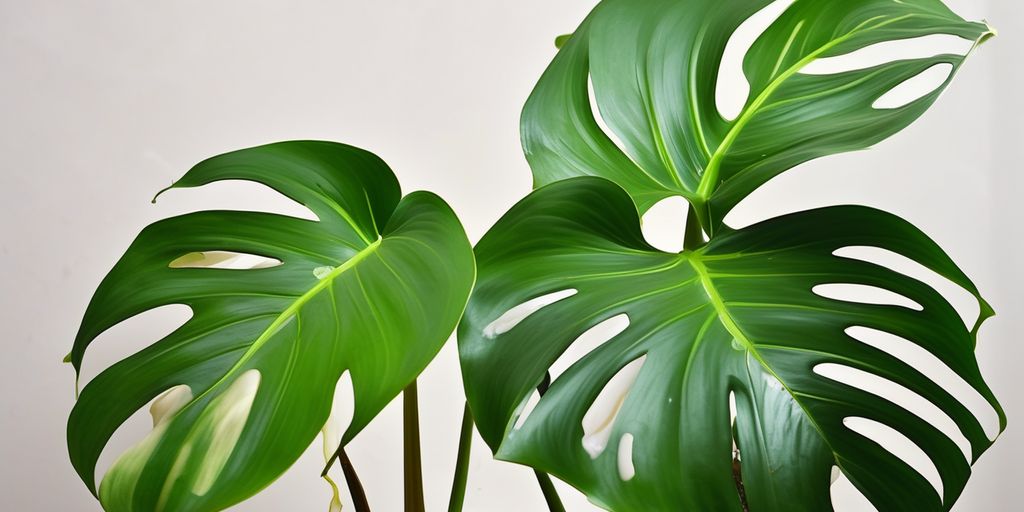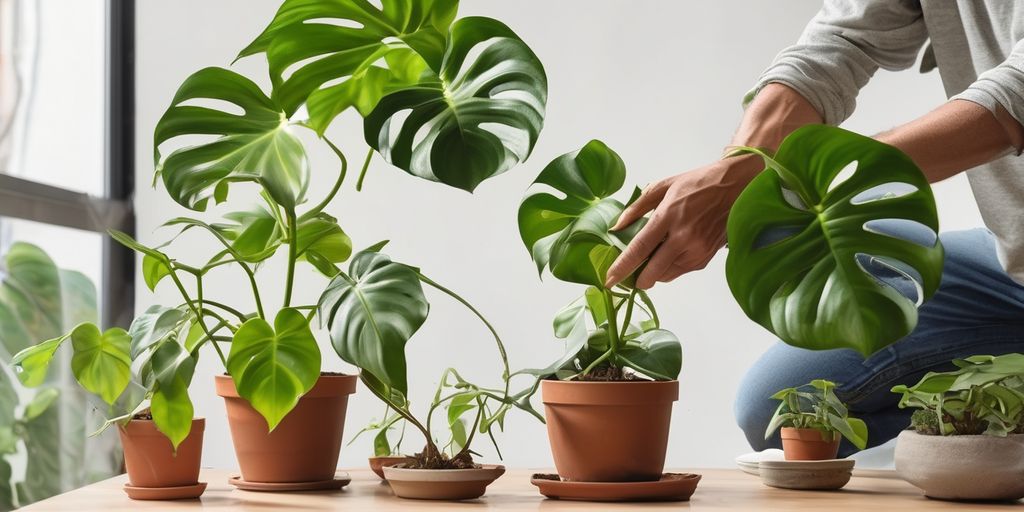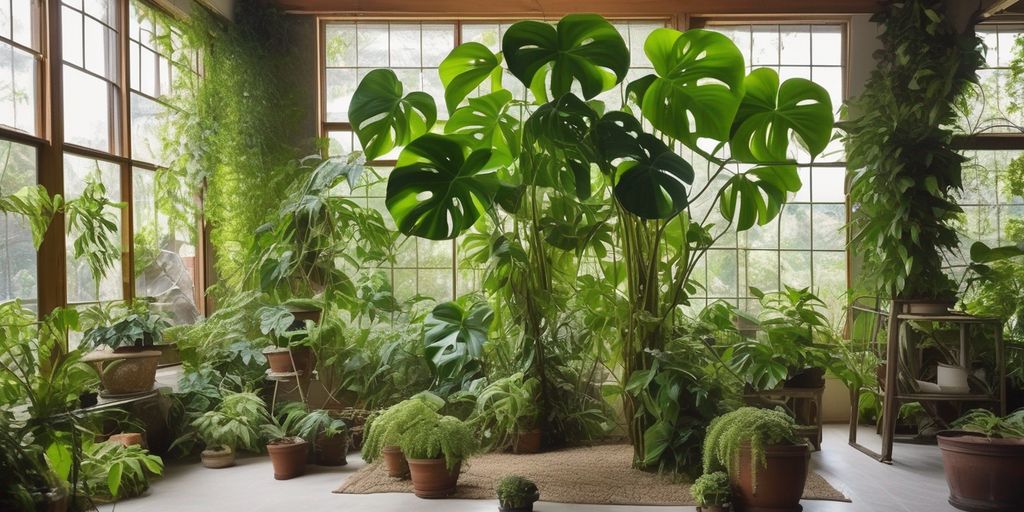The Philodendron Billietiae, with its strikingly long, finger-like leaves, stands out as a captivating addition to any plant collection. This article delves into various aspects of the Philodendron Billietiae, from its origins and ideal growing conditions to its propagation methods and the challenges it faces. By exploring these facets, we aim to provide enthusiasts with the knowledge needed to successfully cultivate and enjoy the exotic beauty of this unique plant.
Contents
- 1 Discovering Philodendron Billietiae
- 2 Cultivation Tips for Philodendron Billietiae
- 3 Propagation Techniques
- 4 Common Challenges and Solutions
- 5 Design and Aesthetics
- 6 Philodendron Billietiae Varieties
- 7 Conservation and Ethical Considerations
- 8 Embracing the Unique Charm of Philodendron Billietiae
- 9 Frequently Asked Questions
- 9.1 What are the origins and habitat of Philodendron Billietiae?
- 9.2 How should I water my Philodendron Billietiae?
- 9.3 What are the ideal soil conditions for Philodendron Billietiae?
- 9.4 How can I propagate Philodendron Billietiae?
- 9.5 What are some common pests that affect Philodendron Billietiae?
- 9.6 Can Philodendron Billietiae be used in home decor?
Key Takeaways
- Understanding the natural habitat and unique features of Philodendron Billietiae helps in its proper care and cultivation.
- Proper soil, light, and temperature conditions are crucial for the healthy growth of Philodendron Billietiae.
- Effective propagation techniques like stem cuttings, air layering, and seed germination can help expand your collection of this plant.
- Addressing common challenges such as pests, diseases, and root rot is key to maintaining a healthy Philodendron Billietiae.
- Incorporating Philodendron Billietiae into home decor and landscapes can enhance the aesthetic value of your space while promoting plant conservation.
Discovering Philodendron Billietiae
Origins and Habitat
Philodendron Billietiae originates from the tropical rainforests of South America, particularly in countries like Brazil, Colombia, and Venezuela. This plant thrives in the humid, warm conditions of its native habitat, often growing along riverbanks and in the understory of dense forests.
Unique Characteristics
The most striking feature of Philodendron Billietiae is its long, narrow leaves with distinctive orange petioles. The leaves can grow up to 3 feet in length, making it a standout in any plant collection. Its aerial roots are robust and help it climb over other vegetation or support structures.
Naming and History
Named after the French botanist Francine Billiet, Philodendron Billietiae has a rich history of cultivation and admiration. The plant was first described in the late 20th century and has since become a favorite among houseplant enthusiasts for its unique appearance and relatively easy care.
Cultivation Tips for Philodendron Billietiae
Ideal Soil Conditions
Philodendron Billietiae thrives in well-draining, nutrient-rich soil. A mix of peat, perlite, and vermiculite is often recommended to maintain the right moisture balance. Ensure the pH level is slightly acidic, between 5.0 and 6.0, for optimal growth.
Light and Temperature Requirements
This plant prefers bright, indirect light and should be protected from direct sunlight which can scorch its leaves. It flourishes in temperatures between 65°F and 80°F. Cooler temperatures can slow down its growth significantly.
Watering and Feeding
Water the Philodendron Billietiae when the top inch of soil feels dry. Over-watering can lead to root rot, so it’s crucial to monitor soil moisture closely. Feeding should be done bi-weekly during the growing season with a balanced, water-soluble fertilizer. During winter, reduce feeding to once a month.
Propagation Techniques
Stem Cuttings
Stem cuttings are a popular and effective method for propagating Philodendron Billietiae. Select a healthy stem with at least two nodes and cut just below a node using a clean, sharp knife. Place the cutting in water or moist soil, ensuring at least one node is submerged. Roots typically develop within a few weeks.
Air Layering
Air layering is a more advanced technique that encourages roots to form on a living plant before the stem is cut. Wrap moist sphagnum moss around a wounded section of the stem, then cover it with plastic to retain moisture. Roots should appear in 4 to 8 weeks, after which the new plant can be severed from the parent.
Seed Germination
Germinating seeds of Philodendron Billietiae can be challenging but rewarding. Sow the seeds in a well-draining soil mix and maintain a temperature of 25-28°C. Keep the soil consistently moist and provide indirect light. Seedlings usually emerge in 3-6 weeks.
Common Challenges and Solutions
Pest Management
Managing pests is crucial for the health of Philodendron Billietiae. Regularly inspect plants for signs of infestation and treat with appropriate insecticides or natural remedies like neem oil. Early detection and treatment are key to preventing widespread damage.
Disease Prevention
To prevent diseases, ensure good air circulation and avoid overhead watering. Implement a routine inspection schedule to catch early signs of trouble, which can save your plant from severe issues.
Handling Root Rot
Root rot is a common issue caused by overwatering. Ensure the plant is in well-draining soil and adjust watering schedules according to the season. If root rot is detected, trim away the affected roots and repot the plant in fresh soil. This can often save the plant if done promptly.
Design and Aesthetics
Incorporating into Home Decor
Philodendron Billietiae, with its striking long leaves and vibrant green color, can be a stunning addition to any home decor. Place it in a well-lit corner or hang it near a window to create a natural, lively ambiance. Consider using decorative pots that complement your interior design to enhance its appearance.
Landscape Uses
The Philodendron Billietiae is not only limited to indoor spaces but also thrives outdoors in tropical and subtropical gardens. It can be used as a ground cover or as an accent plant in shaded areas, providing a lush, tropical feel to the landscape.
Companion Plants
When planting Philodendron Billietiae in a garden setting, pairing it with other shade-loving plants can create a harmonious and visually appealing arrangement. Here are some ideal companion plants:
- Ferns
- Hostas
- Caladiums
By carefully selecting companion plants, you can ensure that your Philodendron Billietiae stands out while contributing to a balanced and beautiful garden ecosystem.
Philodendron Billietiae Varieties
Variegated Types
Philodendron Billietiae is primarily known for its striking green leaves, but the variegated types offer an even more captivating aesthetic with streaks of white or yellow. These variegations occur due to mutations and are highly sought after by collectors. Care must be taken as these plants can be more sensitive to direct sunlight.
Rare Hybrids
The hybridization of Philodendron Billietiae with other philodendron species has resulted in some unique and rare hybrids. These plants often exhibit enhanced features such as improved resilience and novel leaf shapes. Enthusiasts and botanists continue to explore these combinations to create stunning new varieties.
Size Variations
Philodendron Billietiae naturally varies in size, which can be influenced by both genetic factors and growing conditions. Smaller varieties are suitable for indoor containers, while larger types may be ideal for outdoor landscaping. Here is a simple guide to the typical size ranges:
- Small: Up to 2 feet
- Medium: 2 to 4 feet
- Large: More than 4 feet
Proper understanding of the size potential is crucial for effective placement and care of these plants.
Conservation and Ethical Considerations
Sustainable Cultivation
Sustainable cultivation of Philodendron Billietiae involves adopting practices that do not deplete natural resources and support the long-term ecological balance. This includes using organic fertilizers, ensuring proper light and water levels, and avoiding the use of harmful pesticides.
Legal Trade
The trade of Philodendron Billietiae must comply with both local and international laws to prevent illegal trafficking. It is crucial to ensure that all plants are sourced and sold through certified channels that adhere to CITES regulations and other relevant environmental protections.
Community Impact
The cultivation and trade of Philodendron Billietiae can have significant impacts on local communities. It is important to engage with and support local growers, providing them with fair compensation and opportunities for sustainable development. This approach not only helps in conserving the species but also boosts the local economy.
Embracing the Unique Charm of Philodendron Billietiae
The Philodendron Billietiae, with its striking long, orange petioles and large, glossy leaves, offers a unique aesthetic that can enhance any indoor or outdoor space. As we have explored its origins, care requirements, and the various ways it can be incorporated into different environments, it’s clear that this plant is not only a beautiful addition but also a conversation starter. Whether you are a seasoned gardener or a novice plant enthusiast, the Philodendron Billietiae is a rewarding choice that brings a touch of the exotic right into your home or garden. Embrace its beauty and enjoy the lush, vibrant atmosphere it creates.
Frequently Asked Questions
What are the origins and habitat of Philodendron Billietiae?
Philodendron Billietiae originates from the tropical rainforests of South America, particularly in countries like Brazil, Colombia, and Ecuador. It thrives in warm, humid environments with dappled sunlight.
How should I water my Philodendron Billietiae?
Water your Philodendron Billietiae when the top inch of soil feels dry. Ensure thorough watering that allows excess water to drain, avoiding waterlogging which can lead to root rot.
What are the ideal soil conditions for Philodendron Billietiae?
The ideal soil for Philodendron Billietiae is well-draining, rich in organic matter, and slightly acidic to neutral pH. A mix of peat, perlite, and vermiculite is often recommended.
How can I propagate Philodendron Billietiae?
Philodendron Billietiae can be propagated through stem cuttings, air layering, or seed germination. Stem cuttings are the most common method, involving cutting a section of the stem with at least one leaf and root node.
What are some common pests that affect Philodendron Billietiae?
Common pests include spider mites, mealybugs, and aphids. Regularly inspect your plant and treat infestations early with appropriate insecticides or natural remedies like neem oil.
Can Philodendron Billietiae be used in home decor?
Yes, Philodendron Billietiae is an excellent plant for home decor due to its striking long leaves and vibrant green color. It can be used as a statement piece in living rooms, hallways, or any area with indirect sunlight.




